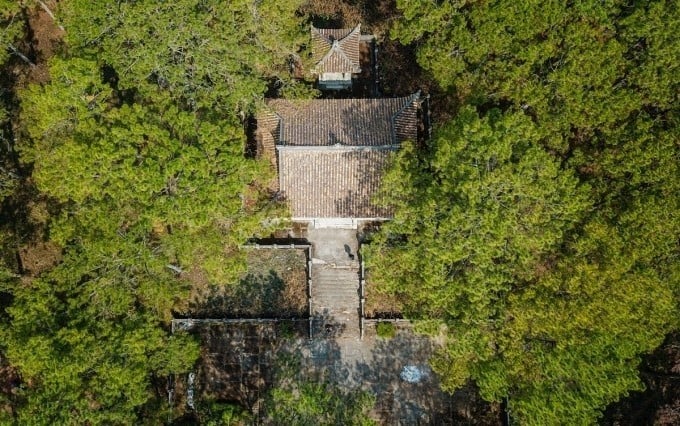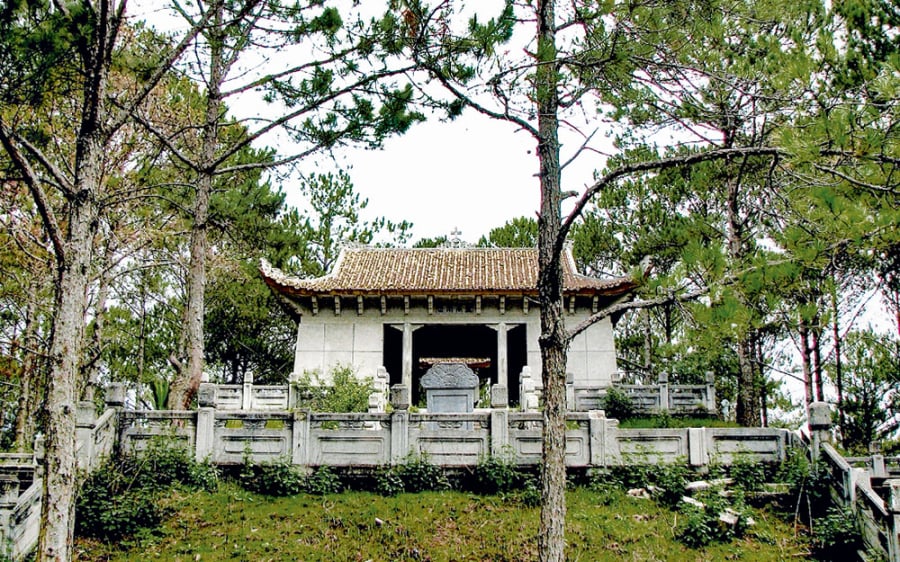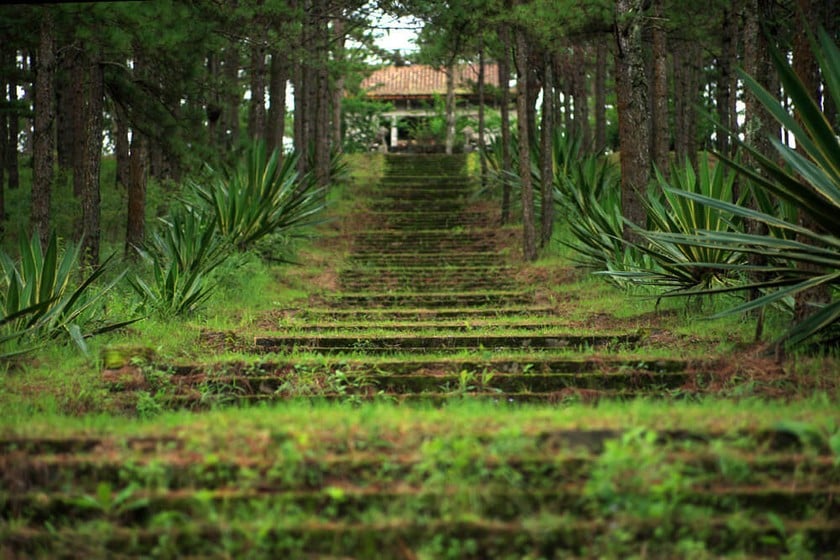Nestled among the lush pine forests of Da Lat, the tomb of Mr. Nguyen Huu Hao, father of Nam Phuong Empress, is not only a unique architectural masterpiece but also a testament to the depth of family love. Let’s explore the mysterious beauty and fascinating historical stories surrounding this tomb.
A Serene Corner in the Heart of Da Lat
Located on a gentle hill at the intersection of Hoang Van Thu and Van Thanh, leading to the famous Cam Ly Falls, the tomb of Mr. Nguyen Huu Hao exudes a rare tranquility. Not many people know about this place, but for those who appreciate serenity and historical insights, it is a captivating destination.
Constructed in 1937, following the wishes of the Empress, the tomb fulfills her father’s last will. It serves not only as the final resting place of Mr. Nguyen Huu Hao but also symbolizes the harmonious blend of Eastern and Western cultures. According to cultural researcher Tran Dinh Son (ZingNews), “this tomb is a typical example of the fusion of Hue royal architecture and Catholic influences, clearly reflecting the historical and cultural context of the early 20th century.”

Unique Architecture Bearing the Empress’s Family Legacy
Built entirely from solid green stone, a material known for its durability and solemnity, the tomb features intricately carved lotus-themed pillars and majestic guard dogs, symbolizing sacred protection. What sets this place apart are the two pairs of couplets, personally inscribed by the Empress herself, reflecting her profound memorialization of her parents. Inside, the tombs of Mr. Nguyen Huu Hao and his wife, Le Thi Binh, are placed in parallel, slightly elevated, within a mausoleum reminiscent of Hue’s royal architecture.
At the back of the tomb lies a small stone stele house, inscribed with a eulogy composed by the Empress herself in 1939. This is not just a memorial to her beloved father but also a testament to the deep family bond of a talented and beautiful empress during a tumultuous historical era.

Where History and Nature Intertwine
The surrounding area of the tomb enhances its serene and idyllic ambiance. Nestled among the pine trees, this place feels detached from the bustling city life. The morning sunlight filtering through the pine needles casts enchanting shadows on the royal blue roof tiles and the cross, creating a cinematic backdrop.
However, after nearly 80 years, the tomb has significantly deteriorated. Some details around the roof, stairs, and balustrades are damaged, and the overgrown vegetation adds to its desolation. A local tour guide shared with Dan Tri: “Many visitors express regret that the tomb has not been properly restored and promoted. It is indeed a ‘precious gem’ that deserves preservation.”

Suggestions for a Meaningful Visit
If you decide to visit this tomb, morning is the ideal time when soft sunlight filters through the pines. Not only will you capture stunning photographs, but you’ll also experience the freshest and most peaceful atmosphere. Note that this area is quite secluded, so it’s advisable to travel in groups or with guidance from locals.
Exploring this tomb offers more than just admiring a unique architectural wonder; it’s an opportunity to find solace and appreciate the harmony between nature and humanity.
A Call for Heritage Conservation
With many historical sites gradually fading into obscurity, conserving and promoting the value of this tomb is essential. It is not just the legacy of the last empress of the Nguyen dynasty but also a cultural and historical memory of Da Lat city.
Given its antique beauty and profound historical stories, Mr. Nguyen Huu Hao’s tomb deserves greater recognition. Hopefully, in the future, this tomb will be restored and sustainably developed for tourism so that both Vietnamese and international visitors can appreciate its unique value.






































